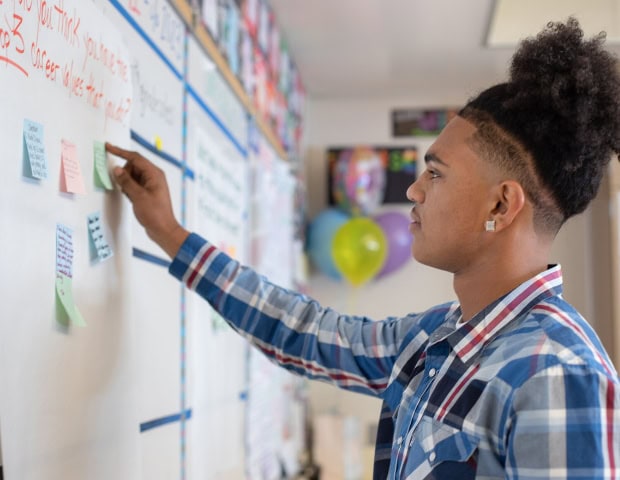Motivating students on their postsecondary journey is not just about encouraging them to start, but also empowering them to complete their education. This blog post explores effective strategies and insights to inspire and support individuals in pursuing and persisting on their postsecondary path, ultimately helping them achieve their academic and career goals.
Understanding and Supporting Stopout Students
By Monica Selagea
August 27, 2024
Explore strategies to support stopout students as they navigate the challenges of returning to college. Read this blog post to examine the barriers to completion and offer actionable solutions to help more students achieve their educational goals. Get inspired from Ricardo Godinez and Angelica Moncada’s personal stories of persistence.
As educators, we are constantly thinking about our students after they graduate high school. Did we adequately prepare them for the next phase of their life? From adapting to a new academic environment to continuing their social and personal growth, learning how to balance this new venture is critical for students. Ultimately, we just want them to thrive! However, students who pursue higher education will face a plethora of unforeseen challenges that can result in them dropping out or “stopping out” of college. How can parents, teachers, and educational institutions encourage students to follow a path of success? This blog post aims to shed light on the phenomenon of stopout students and explore strategies to support them in returning to, and completing, their postsecondary education.
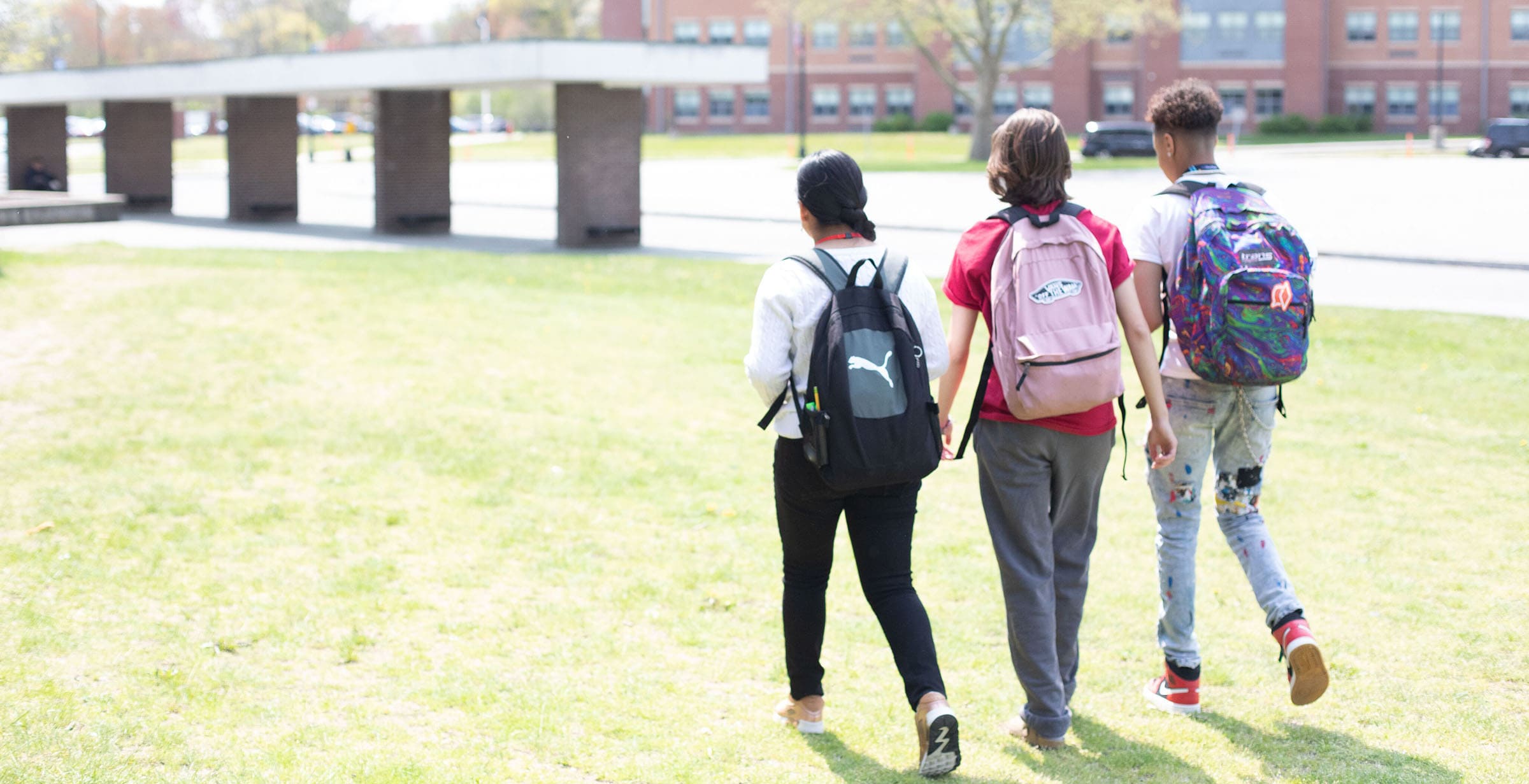
The Difference Between
Stopout and Dropout Students
Stopout students are those who temporarily leave their college or university education with the intention of returning at a later time. Since they often take longer to complete their degrees, stopping out prolongs their entry into the workforce. But it also impacts the institution’s overall graduation rate, which can affect the school’s rankings and eligibility for certain funding and grants.
This is different from dropout students, who leave their educational journey permanently without completing their degree, which leads to higher unemployment or lower lifetime earnings for the student. Dropping out directly lowers the college’s graduation rates, impacting future funding.
There are 40.4 million stopouts in the US, which adds up to a significant workforce development challenge. Along with declining college enrollment rates, a disproportionate number of stopouts come from underserved populations — those who are first-generation, those who come from low-income communities, or Black or Hispanic students. Not completing an educational journey can increase challenges to a student’s future career, which can result in lower-paying jobs and fewer professional opportunities. Additionally, there are significant personal and social consequences that extend to future generations. Stopping out limits a student’s future ability to contribute to society, so addressing the barriers to college completion can help individuals achieve greater economic stability and personal fulfillment.
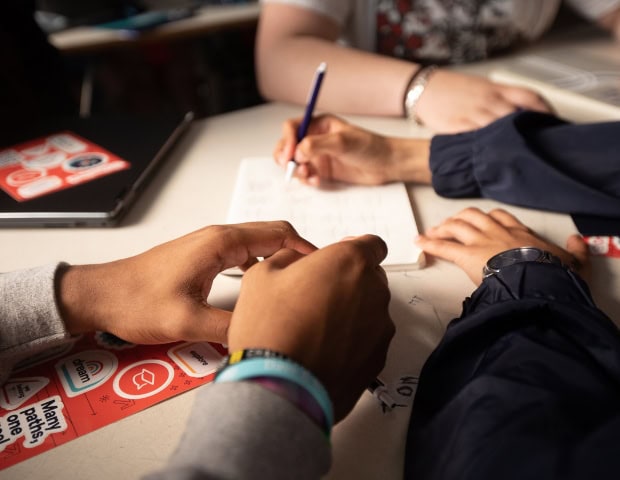
Why Are Students
Opting Out?
In order to better serve these students, we first must understand the root causes of stopping out. OneGoal designed and executed a year-long qualitative study to identify the root causes behind our students withdrawing from their postsecondary pathway:
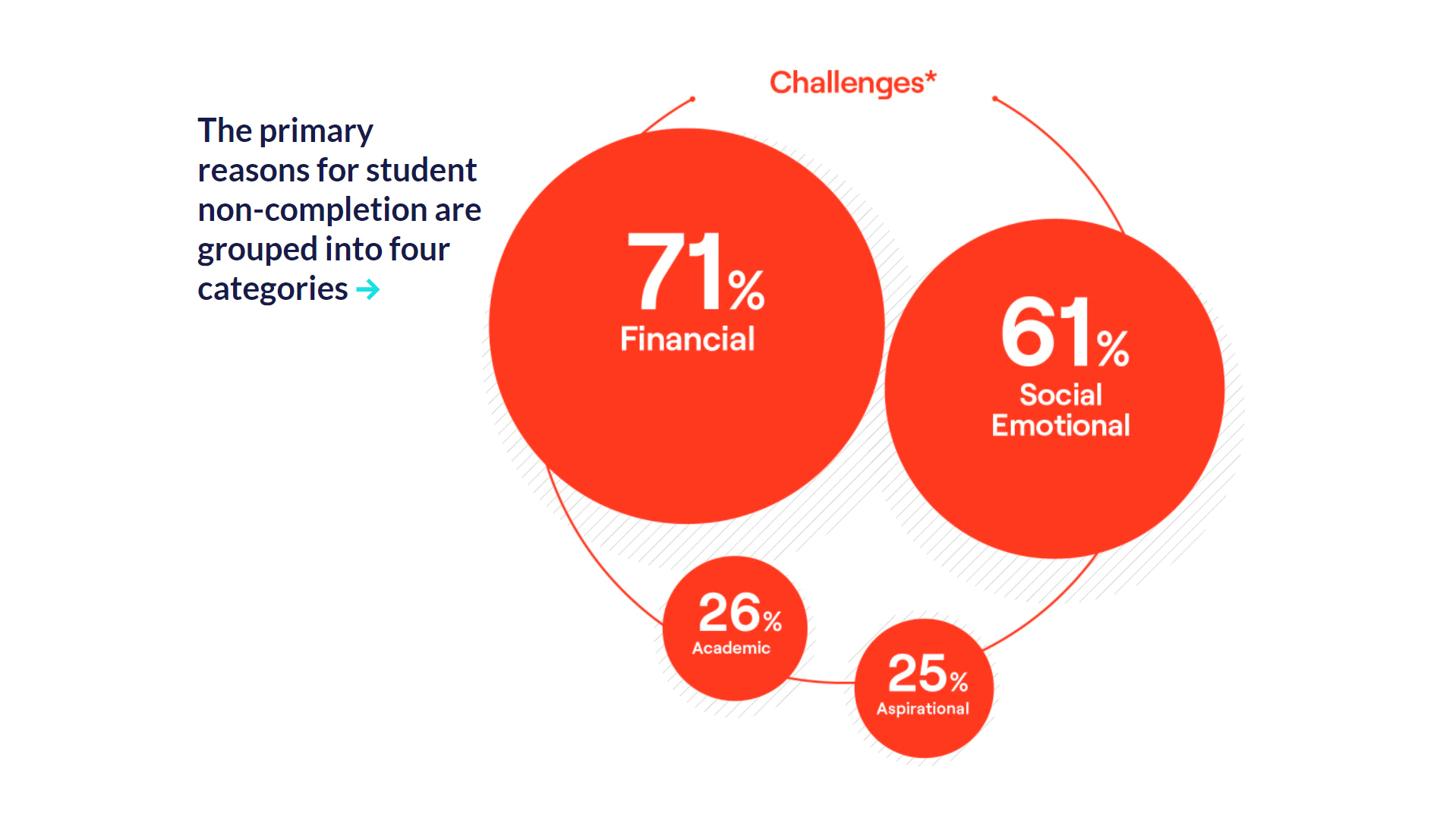
Financial:
Finances can be a top concern for students at risk from stopping out of college. The cost of tuition, fees, books, and living expenses can be overwhelming, especially for students from low-income communities. Financial stress can force students to work long hours, leaving less time for studies and increasing overall stress levels, especially for those trying to balance their education with the need to support family members. With higher education costs on the rise, some students do not have access to enough financial aid or family assistance to help manage financial hardship.
Academic Challenges:
Academic challenges play a crucial role in students deciding to stop out. Students who struggle to keep up with coursework, maintain satisfactory grades, or meet academic expectations may feel overwhelmed and choose to leave temporarily.
Social/Emotional Mental Health:
Stress is the greatest barrier to student success, with multiple studies indicating that it is a significant factor leading to stop out rates. Stress can stem from academic pressures, financial burdens, social challenges, and personal issues. And balancing their mental health needs is their most pressing challenge! When stress becomes overwhelming, it can deter or limit a student’s ability to succeed.
Aspirational/Personal Circumstances:
The transition to college life, forming new relationships, and being away from family can contribute to social and personal stress. Missing a sense of belonging, loneliness, and lack of social support can heighten stress. Students may be dissatisfied with their initial postsecondary goal, which can lead to anxiety and further contribute to stopout rates.
These issues seem to come hand in hand, but the prevalence of stopout rates can also vary by age, gender, socioeconomic status, and race/ethnicity, with students of color and older students being more inclined to stop out of college.
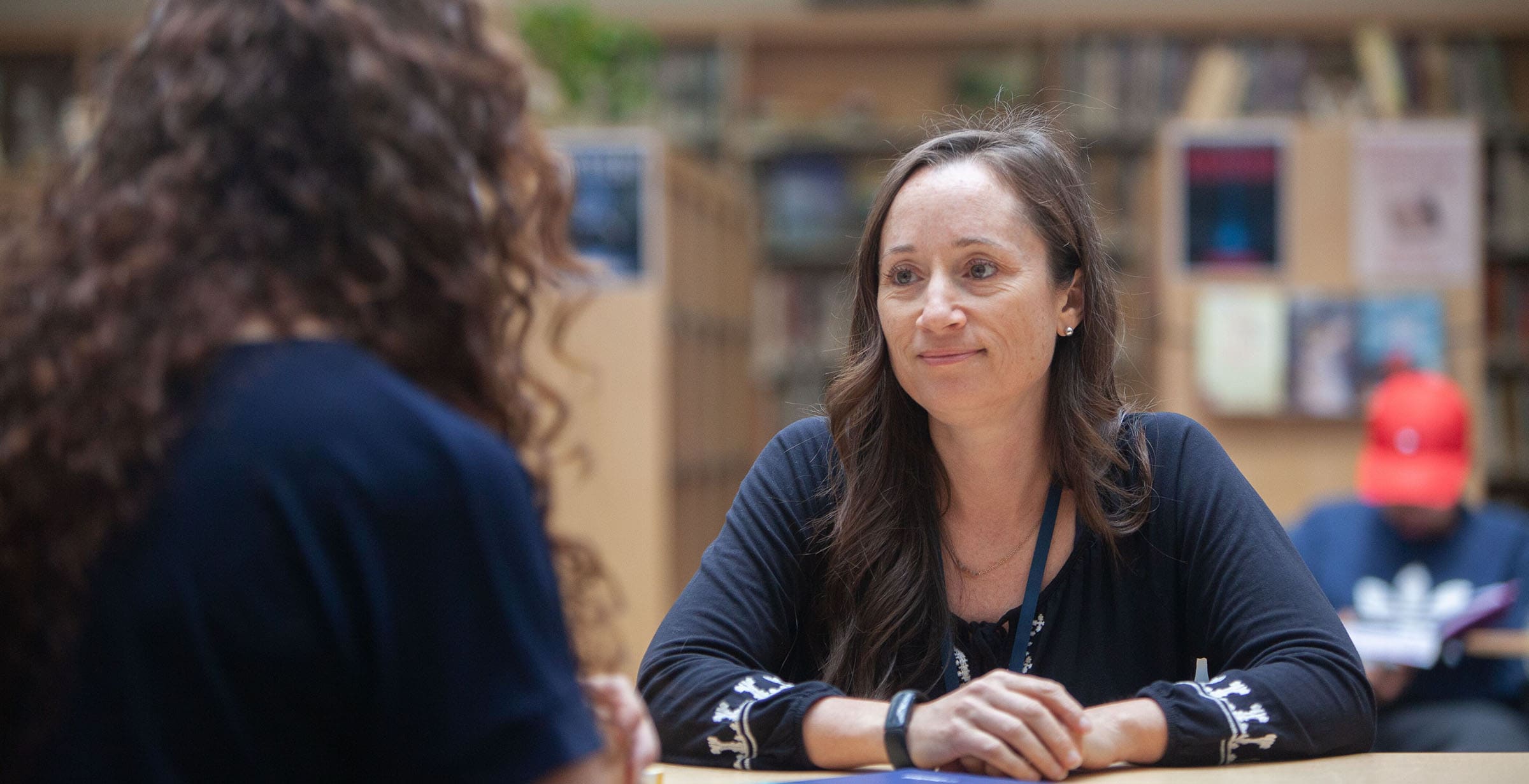
Which Students
Are Opting Out?
According to data from The National Clearing House Some College, No Credential (SCNC) Student Outcomes, “Racial minorities were overrepresented in the some college, no credential population, with Latino and Black students making up 43 percent of those who stopped out in the last decade, compared to about 35 percent of undergraduates over all.”
- As of July 2022, recent stopouts were slightly younger compared to the previous year. Students 18 to 34 years old at the time of stopout accounted for 83% of recent stopouts.
- Women accounted for a higher share of recent stopouts than men.
- Minority students, particularly African American and Hispanic students, have higher stopout rates compared to their counterparts of other races/ethnicities.
- Completion rates of students from low-income communities still are far behind their peers from high-income areas. These students are more prone to stopping out due to financial pressures and lack of resources.
These disparities appear to be persistent according to the Some College, No Credential Student Outcomes 2024 Report. More support is needed to ensure that schools reach their attainment goals in ways that narrow, rather than expand, existing gaps. So how can we help our students?
Testimonies:
Challenges Faced by Stopout Students
Angelica Moncada, a OneGoal Fellow from Chicago, Class of 2016: Full Testimony
“I believe students “stop out” because there’s no preparation that truly equips you for life after high school. Suddenly, you’re no longer a child, and every decision you make carries weight—either propelling you forward or veering you off course.”
Ricardo Godinez, OneGoal Fellow from Chicago, Class of 2016: Full Testimony
“As humans we are sometimes our biggest obstacles because of our own minds. When we become doubtful, it is difficult to control our emotions and this can lead us to making irrational decisions or making mistakes…there are plenty of challenges that come with being a student in college…earning a degree is not supposed to be easy and it is not promised but many students tend to be afraid of failing, making mistakes, or seeking help.”
Strategies to Support
Stopout Students
According to The Forgotten Student, “Students will continue to ‘stop out,’ and there is a moral imperative not to give up on them. Is it time for us to agree that we need to focus attention, resources, and creativity on bringing students back and providing the support to enable them to earn their degrees?”
To help students achieve their goals after graduation, high school educators and college and university leaders need to understand the challenges students face while enrolled. High school can equip students with skills and tools to support their postsecondary path. Educators can encourage their students to use tools such as DecidEd to understand their financial aid award letters. Colleges can encourage student persistence by offering comprehensive financial, academic, and personal support. Institutions can address the diverse needs of their student population to help them overcome these barriers. This will not only benefit the student, but the institution’s retention rates and the economy for the workforce. With proper guidance, support, and strategies, stopout students have the potential to complete their degree.
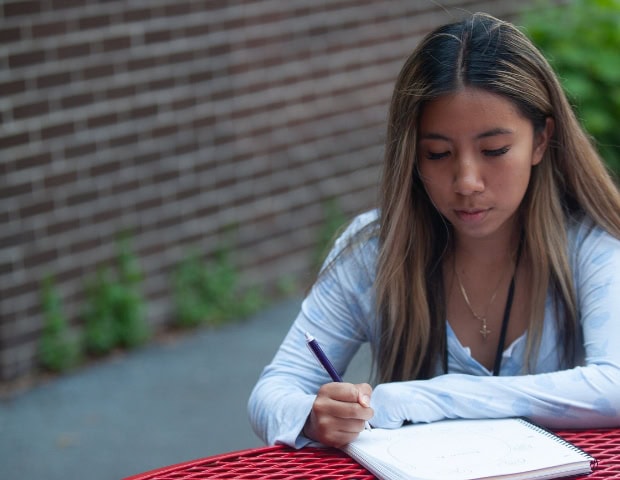
Financial Support and Counseling:
- Schools should make this a top priority. They should reach out with information about any financial opportunity for the student. Although some schools may offer a version of this, creating a central hub or offering quarterly workshops can increase students’ engagement
- Scholarships and Grants: Increasing the availability of scholarships and grants can reduce the financial burden on students.
Targeted financial aid for students from low-income communities can be particularly effective. - Financial Literacy Programs: Offering workshops on budgeting, managing student loans, and financial planning can help students make informed financial decisions and reduce stress related to money.
Academic Support Services:
Connecting students to an advisor can make a big difference for the student. Although many colleges offer this support, current efforts are insufficient. Colleges need to be more proactive and intentional in ensuring that students receive quality advising and guidance. It can be difficult for students to schedule appointments and connect with an advisor. This should be simplified and preferably offered online as well. Connecting the student with a dedicated advisor, who would support the student through their educational path, is crucial.
- Tutoring and Academic Advising: Providing accessible tutoring services and proactive academic advising can help students stay on track. Advisors can assist with course selection, academic planning, and identifying at-risk students early.
- Learning Centers: Establishing learning centers that offer workshops on study skills, time management, and exam preparation can improve students’ academic performance and confidence.
Mental Health and Wellness Programs:
Regular wellness checks and peer support groups will also benefit the student.
- Counseling Services: Expanding mental health services and ensuring they are easily accessible can support students facing stress, anxiety, and other mental health issues.
- Stress Management Workshops: Offering workshops on stress management, mindfulness, and coping strategies can equip students with tools to handle academic and personal pressures.
Enhancing Campus Engagement:
Institutions should do outreach and connect students with on-campus clubs, programs, and organizations. A student can develop a strong support system with peers who are going through the same challenges..
- Clubs and Organizations: Encouraging participation in student clubs, organizations, and extracurricular activities. This will give the student the opportunity to build connections with other students outside of class and develop a sense of belonging and community.
- Mentorship Programs: Pairing students with peer or faculty mentors can provide guidance, support, and a stronger connection to the college community.
OneGoal in Houston connects its students with a OneGoal Alum studying at the same institution who acts as a mentor. The Alum guides and supports the student, giving them a smoother transition from high school to college.
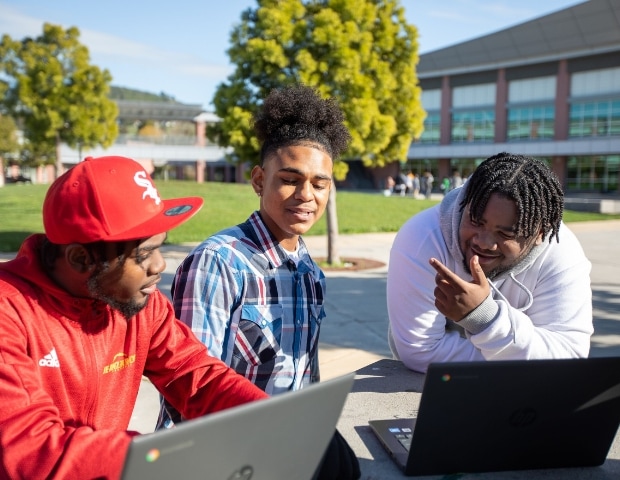
Career Services and Internships
- Career Counseling: Offering robust career services, including resume building, interview preparation, and job search assistance, can help students see the long-term benefits of completing their degree.
- Internship Opportunities: Facilitating connections with internships and co-op programs can provide practical experience and improve job prospects, making the investment in education more tangible.
Early Warning Systems and Intervention Programs:
Institutions should pay attention to warning signs. They should be aware of the student’s academic trajectory, persistence level, and mental stability. These programs should make an effort to guide students to a path of success.
- Early Warning Systems: Implementing systems to identify at-risk students based on academic performance, attendance, and engagement can allow for timely interventions.
- Retention Specialists: Employing retention specialists who can work with at-risk students to develop personalized plans for success can help address individual challenges and barriers.
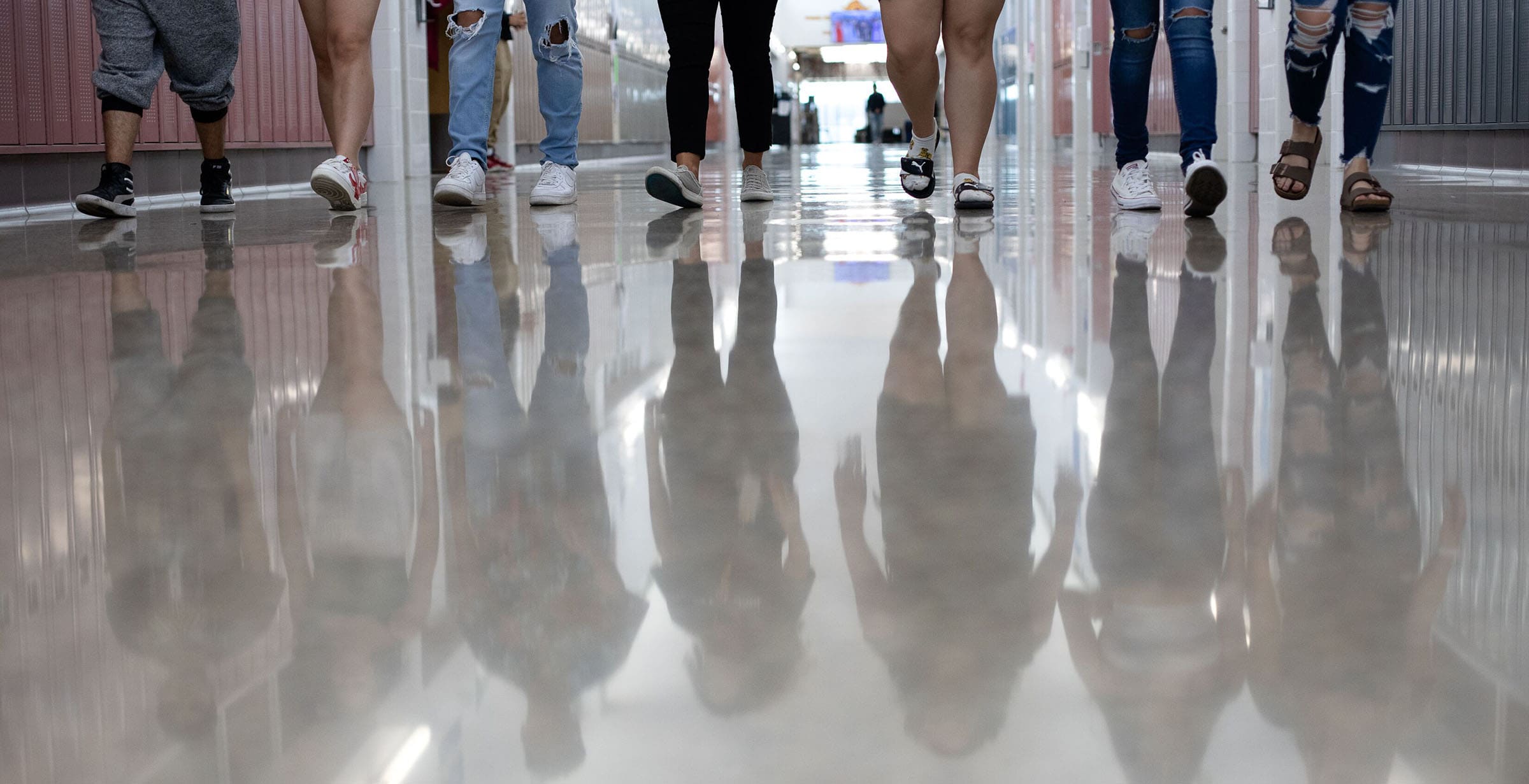
However, colleges are not the only ones who should focus on students’ success. It should start at the high-school level with teachers, staff, and parents supporting and guiding the student to make a postsecondary decision based on quality enrollment. Counselors can help students throughout their high school career with financial aid workshops and one-on-one mentoring while creating spaces to include the parents in their children’s future plans. Implementing the OneGoal program in high schools can guide a student toward institutions that are a better fit for them, supporting and developing social belonging, positive relationships with faculty and staff on campus, and more. Considering the overall “personal fit” of an institution is critical for student success.
Life Happens
Why Supporting Students Beyond the Traditional Four-Year Plan is Crucial for College Success
Traditionally, we teach students that it takes four years to complete a college education in order to obtain a bachelor’s degree. In a perfect world, that would be ideal, but the reality is, life happens. After Covid, many students began rethinking not only their major, but also whether college was even worth completing, let alone attending. Life happens; there are valid reasons why students stop out of college, but ideally, we all want students to graduate and earn a degree they feel proud of. But it takes a village to help students, especially students from low-income communities or first-generation students, throughout their educational journey and encourage them to persist. Early intervention is key in helping to retain students. Teachers, staff, college leaders, and parents can work together to help the student succeed. By implementing support systems and flexible learning options, institutions can help students stay on track.
Monica Selagea grew up in Chicago and attended Columbia College in Chicago and DePaul University. She is currently a high school teacher in Chicago and a Program Director for OneGoal. She also teaches at the City Colleges of Chicago.

Related Stories
Discover the five must-have college readiness skills every student needs to navigate the challenges of college life successfully. These skills help students transition smoothly from high school to college and thrive in their postsecondary journey.
In today’s rapidly changing educational landscape, traditional four-year college degrees are no longer the sole path to success. In this blog post, we’ll explore four alternative postsecondary options that offer promising routes to fulfilling careers and personal growth.

